One of the fundamental elements of photography is shutter speed. Knowledge of how this works and how it affects exposure will give you a great insight into how you can best manipulate it to create more creative photographs.
Shutter speed in photography is the time taken to open a camera shutter to allow light in to expose the sensor or film and produce an image (or a negative on film). It is measured in fractions of a second or it can be multiple seconds or minutes. It can be controlled manually or automatically.
It is an important skill to understand in order to maximise your potential in photography. Below you will find out how shutter speed in photography works and how to exploit it to produce a wide variety of creative effects.
Shutter Speed Explained and Creative Ways to Use it
Before a photograph can be created we have to allow light into the camera which is basically just a dark, enclosed box until we press the shutter release button.
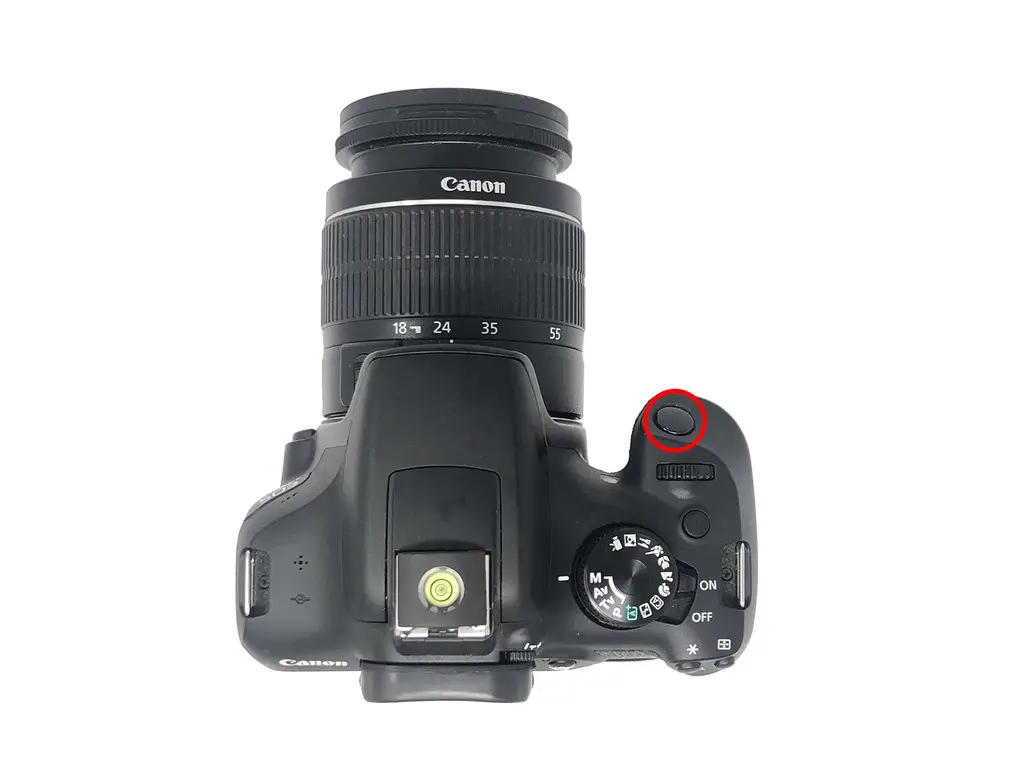
When we press the shutter release button a curtain is opened to our enclosed, dark box allowing light into the interior and exposing the sensor (or film) for a fixed period of time. The length of time that the shutter is open is called the shutter speed.
How the shutter works in a camera
The shutter is simply a moveable barrier that prevents light from entering the camera until we are ready to take a picture. It is always closed until we press the shutter release button found on the top of the camera. When we have composed our scene by looking through the viewfinder we are then ready to take the photograph by pressing the shutter button.
At this moment, one of the curtains of the shutter starts to open to allow light into the camera. After a pre-determined length of time, a second curtain, travelling in the same direction as the first one proceeds to close and shut off the exposure of light to the sensor. The time between the opening of the first curtain and the closing of the second curtain is the shutter speed.
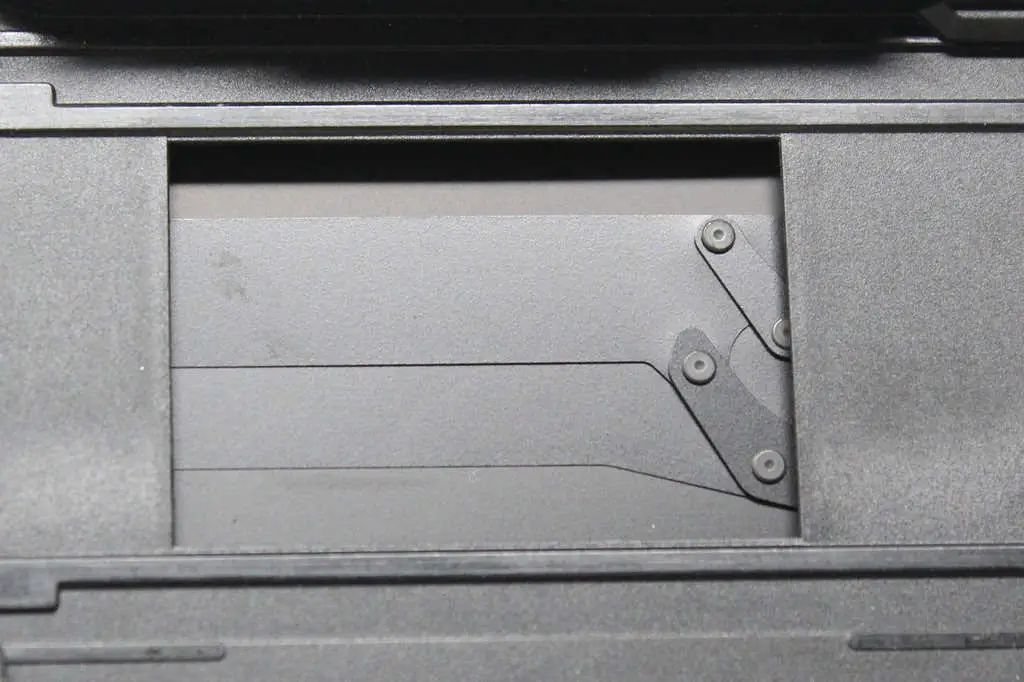
The mechanical shutters inside a DSLR. They are extremely thin and light and can move incredibly fast; sometimes over 1/8000th of a second. The first set of shutter blades drop down and stack up at the bottom very quickly. This exposes the sensor to light. After the allotted time a second set of blades that are parked at the top expand and rapidly drop down to shut off the light and complete the exposure.
How does shutter speed affect exposure in photography?
The shutter speed can directly affect the brightness or exposure of the image. If the shutter is held open for a relatively long time; a slow shutter speed, the sensor will receive a lot of light and the image may be over-exposed.
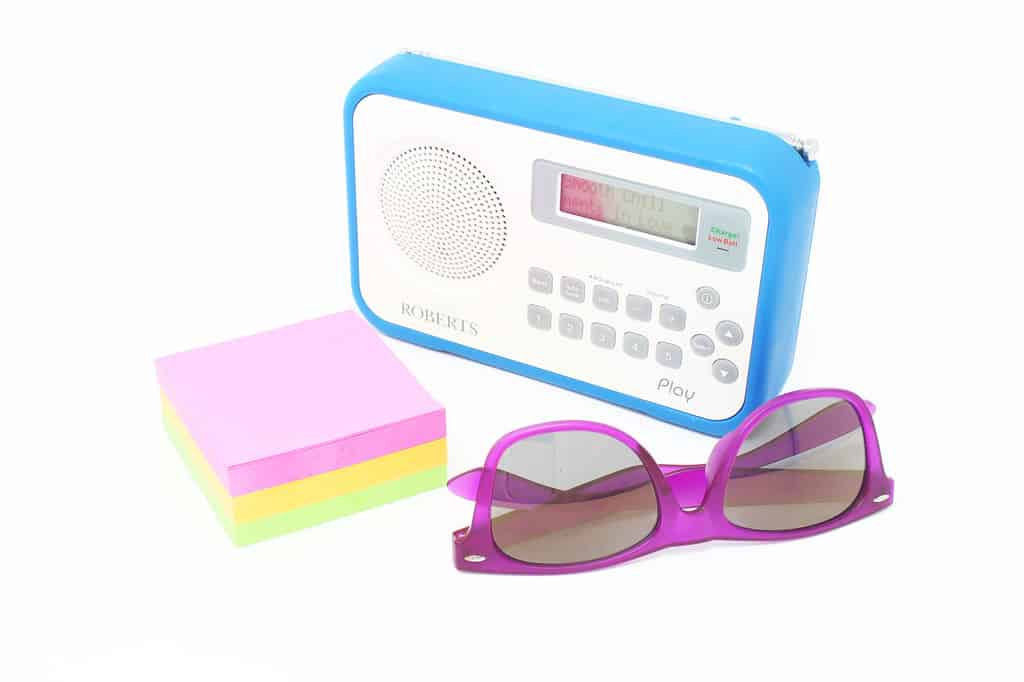
Photo by Oscar J Harper
This still life was taken in a light cube so the LED light was constant and from above-front and above-left side. Setting the camera to Manual mode we can demonstrate how the image appears when we overexpose by 2 stops by using a too-slow shutter speed. The colours are washed-out and pale.
If the shutter speed is very fast and the shutter is only open for a fraction of a second there is a possibility that the image will be too dark; under-exposed.
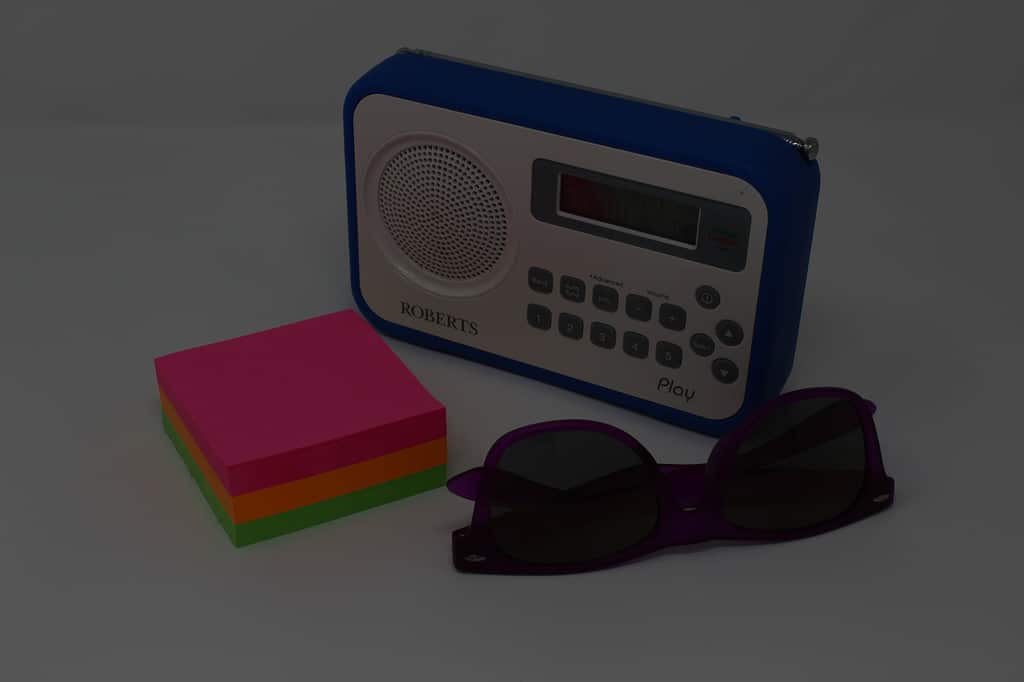
Photo by Oscar J Harper
With the same arrangement of objects as before we can now demonstrate how the image looks when it is two stops underexposed. The whole scene is very dark. The white background is dark grey. This is in Manual mode again as this gives us the most control. We chose a shutter speed that is too fast and you can see that the result is very unsatisfactory.
The required shutter speed is also dependent on the amount of available light in the scene to be photographed. Very dark scenes may require a very slow shutter speed to give time for the sensor (or film) to receive enough light to produce a satisfactory exposure.
Extremely bright scenes may require a very rapid shutter speed to capture the image and prevent over-exposure.
To achieve a perfect image the shutter speed can be linked to aperture and they work together to produce the correct exposure. This can be done automatically by the camera’s brain or manually by the photographer.
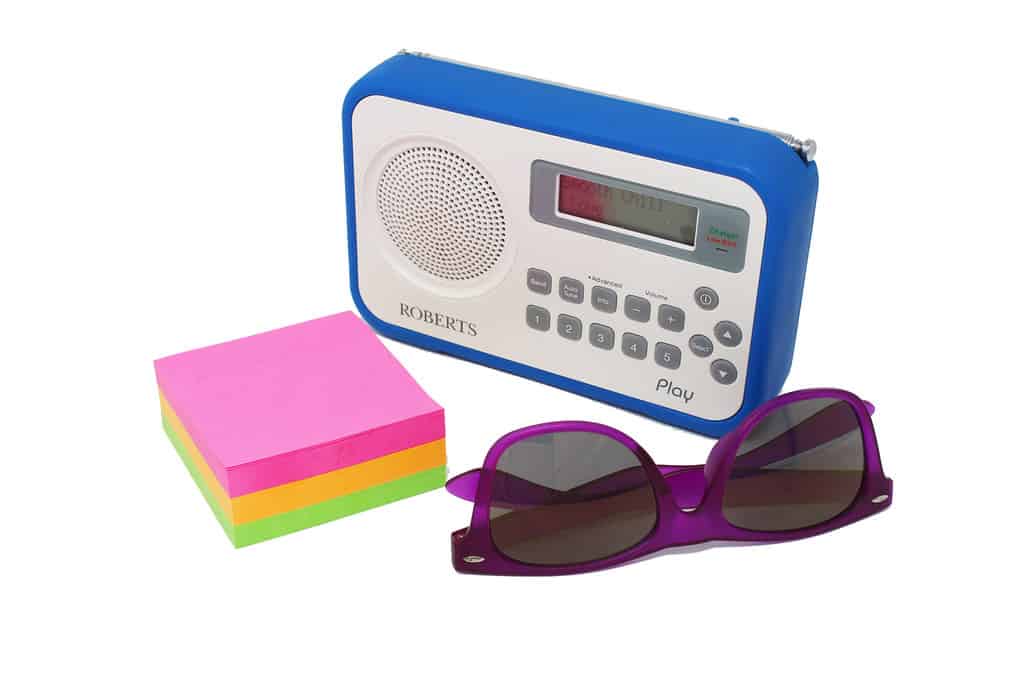
Photo by Oscar J Harper
Now we have found the perfect exposure so that the white background is very white and the bright colours are popping. In a bright image like this, in automatic or semi-automatic modes the cameras light meter can become confused by all the bright white background and will try to compensate by darkening the overall image making it appear a little grey.
In this case you have to experiment and adjust the exposure by overexposing a little to override the cameras general light metering capabilities.
How does shutter speed affect motion in your photographs?
The most interesting aspect of shutter speed in photography is how it can capture motion in an image. Varying the shutter speed can produce very different results from the same subject matter.
Very fast shutter speed has the ability to freeze the action of a fast-moving subject.
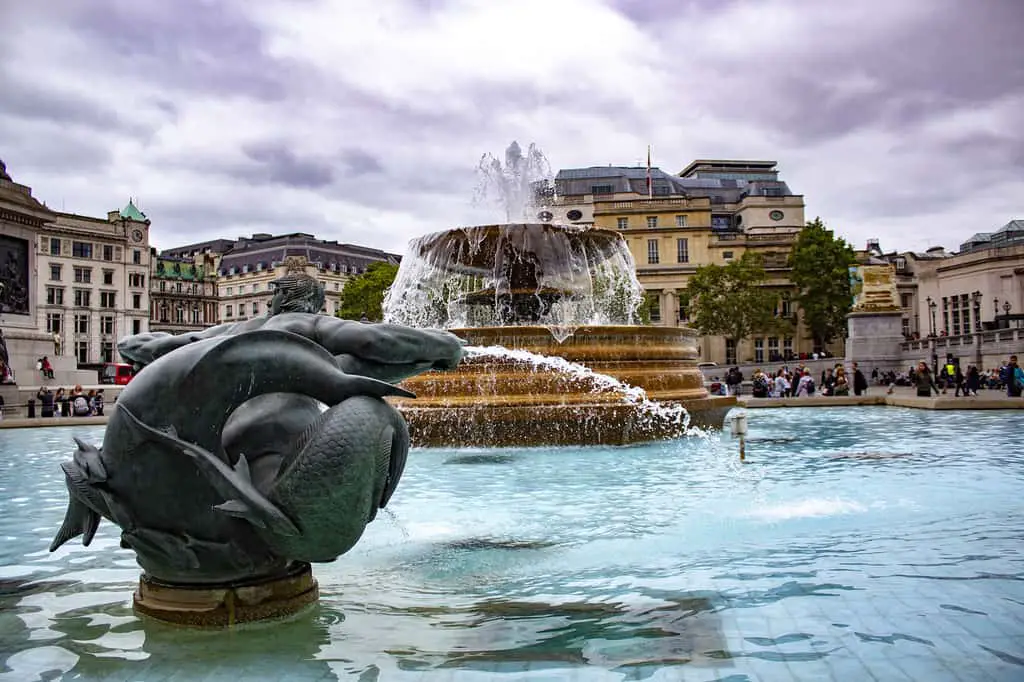
Photo by Oscar J Harper
The fountain of Trafalgar Square, London makes a great subject to demonstrate the extremes of shutter speed. The rapidly gushing water of the fountains is frozen in time and appears to look like ice. The very fast shutter speed required a large aperture to balance the exposure.
Very slow shutter speed can be used to deliberately cause the blurring of a moving subject for creative effect.
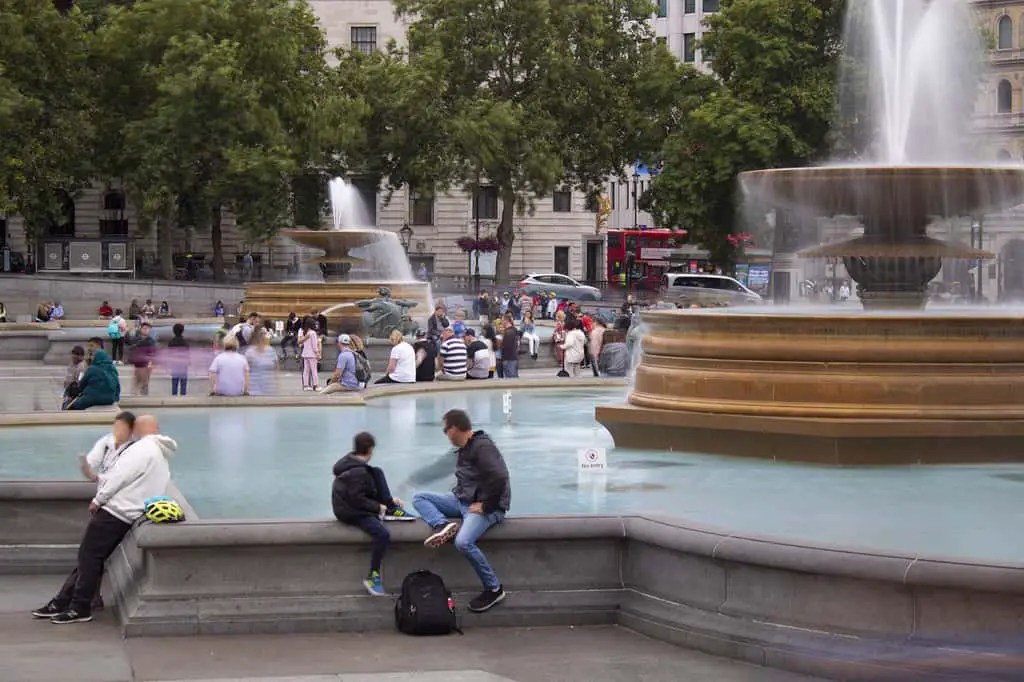
Photo by Oscar J Harper
Staying in Trafalgar Square we can use the fountains to demonstrate the effect of very slow shutter speeds. This time, with a shutter speed of about 1.6 seconds, the water is rendered as an indistinct hazy mist.
An unwanted effect of motion in your photography is camera-shake. This occurs when you are hand-holding your camera without the benefit of a tripod. Any tiny movement you make, even just the act of depressing the shutter button can result in blurred smudges or a lack of sharpness in the photographs.
The effect is more noticeable when you are using long, heavy lenses without a tripod. Therefore to minimise the effect of camera shake whilst hand-holding long lenses, you should increase the shutter speed.
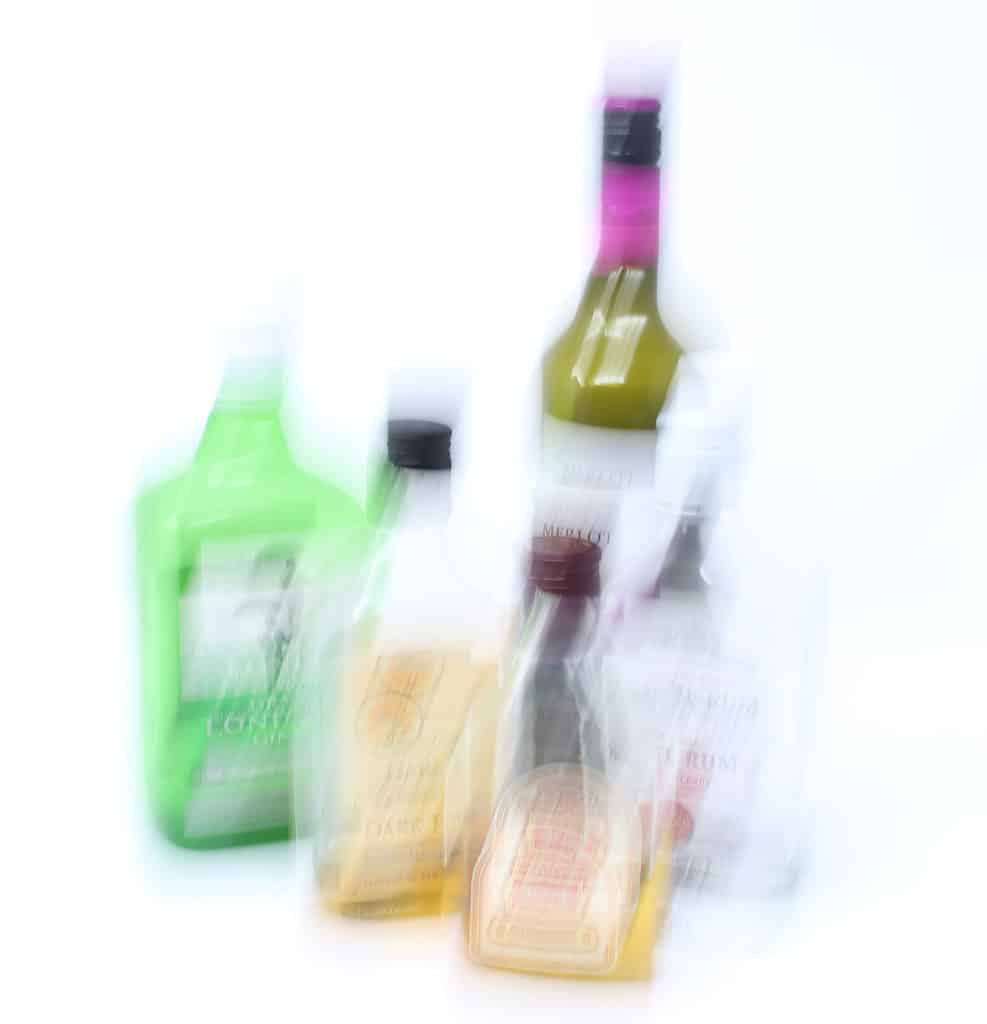
Photo by Oscar J Harper
How is shutter speed measured?
The shutter speeds are measured in seconds. These are usually fractions of a second or multiple seconds. On your camera, you might see the shutter speed expressed as a number like 125 which means 125th of a second or 1/125 (0.0125 seconds).
This is also known as the “exposure time” as it refers to the amount of time that the sensor (or film) is exposed to light.
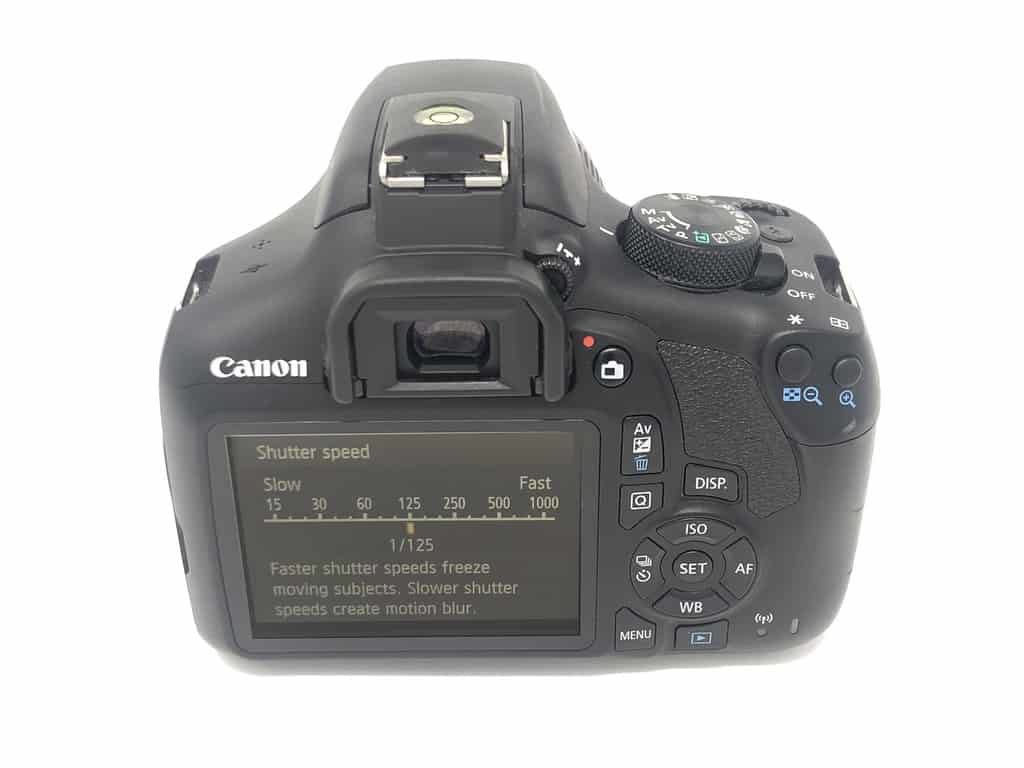
This menu is usually accessed via the main program menu by selecting the shutter speed box and pressing the “Set” or “OK” button. You can then fine-tune the shutter speed using the wheel or left and right buttons.
Modern DSLR cameras can offer a very wide range of shutter speeds from a few thousandths of a second to several seconds. Some cameras also have a “bulb” mode where the shutter can be held open for as much time as you need.
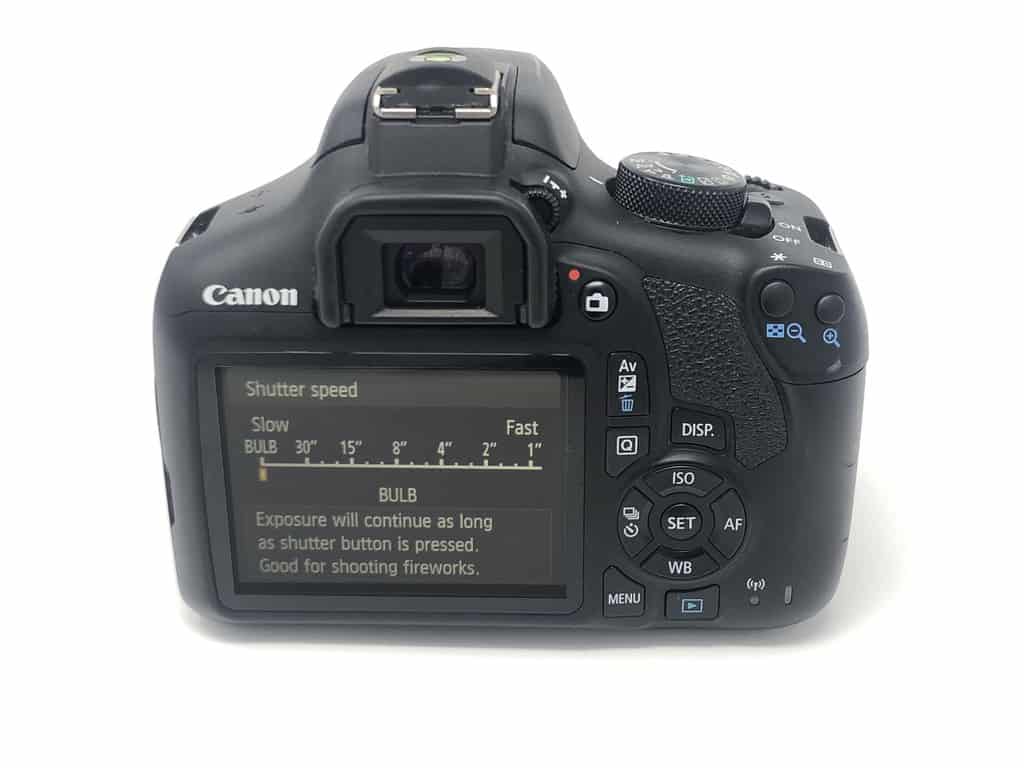
The “Bulb” timer is usually only found in Manual mode as it is uncontrolled by the camera and requires some experimentation to achieve the desired results. It can be used in creative ways like painting with light in this 30-second exposure.

Photo by Oscar J Harper
It is called “bulb” because earlier film cameras had a shutter that could be opened by connecting a rubber bulb by a narrow tube and squeezing a blast of air to depress the shutter button.
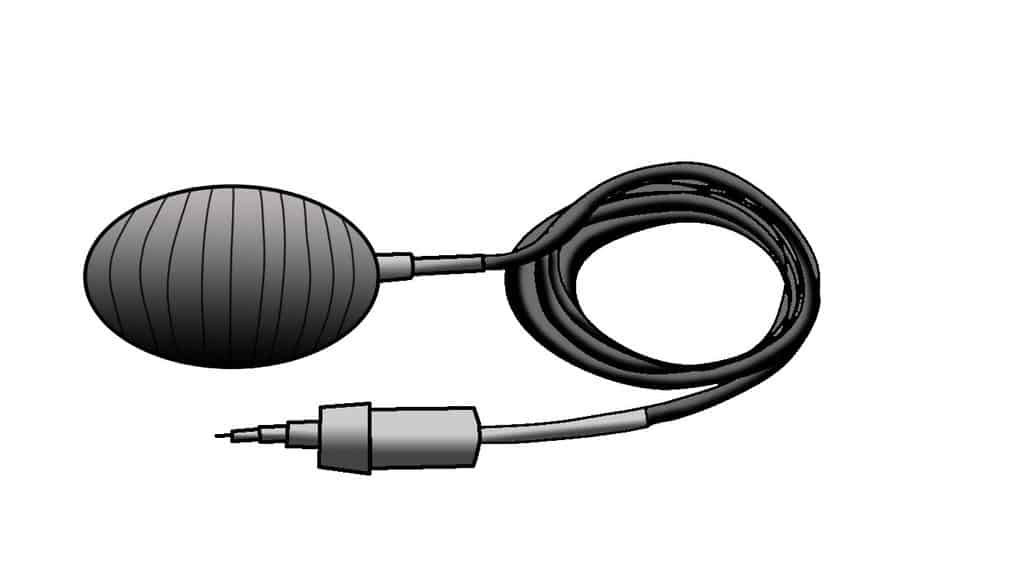
What is Shutter Priority (Tv or S on Your Program Dial)
Tv stands for “Time Value”. S stands for “Shutter”.
Shutter priority is a convenient mode that leaves you to think about one aspect of exposure only, the shutter speed. The camera then takes care of the other aspect; aperture. You select the shutter speed and the camera gives priority to that setting and works around it to produce a balanced exposure.
Putting into practice what we know about exposure and motion in photography we can pre-select a shutter speed that will give us the desired result (frozen action or motion blur) and allow the camera to set the aperture for a perfect exposure.
To select Shutter Priority on your camera simply turn the program dial to “Tv” which means Time Value or “S”. You will then have full control of the shutter speed and it will overrule the aperture setting.
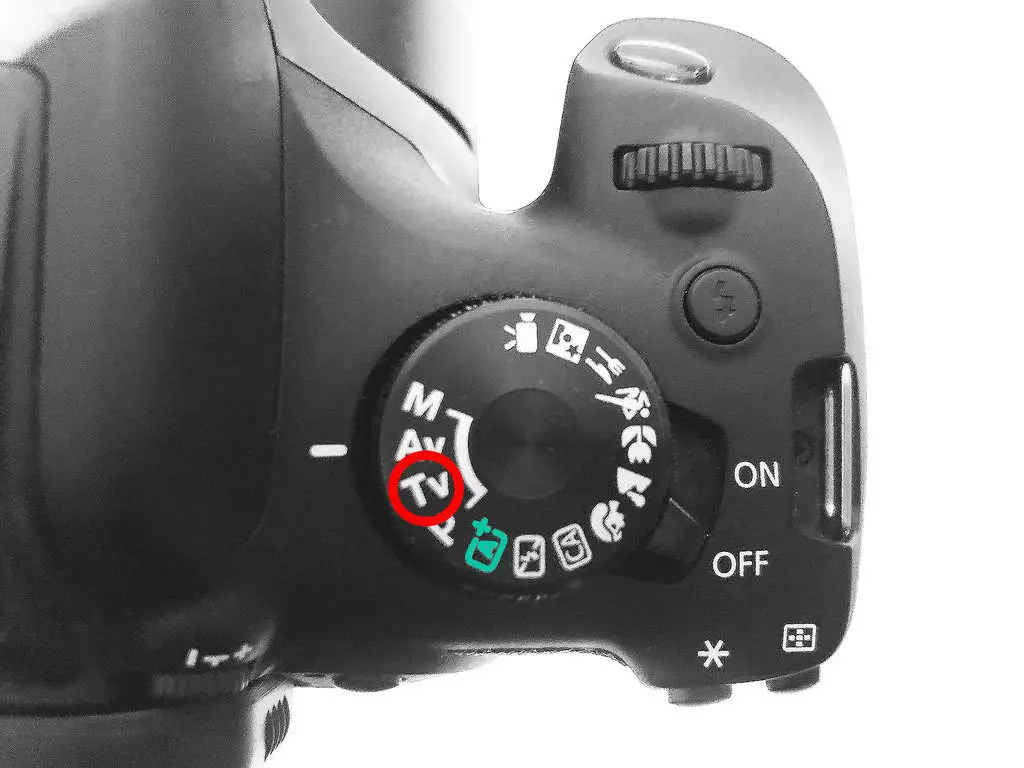
You still usually have the extra fine-tuning ability to have control over the ISO. This will give you influence over the light amplification if your chosen shutter speed does not yield the desired result.
For example, when selecting a fast shutter speed and the aperture, chosen by the camera is too large, it produces an unwanted blurred background; you could increase the ISO which allows you to decrease the aperture opening and increase the depth of field.
How to use shutter speed creatively in photography
We can now apply our improved knowledge of shutter speed to experimentation in photography. We can choose a shutter speed that will achieve the desired effect with confidence. We know that a fast shutter speed can freeze fast-moving action, It can also darken the exposure of an image if that is the desired effect.
We also know that a slow shutter can brighten up a dark image or render anything that is moving in the scene as a blur for creative effect.
Moving water is always an interesting subject to photograph and your choice of shutter speed can dramatically change the result of the captured image. We might be observing a fast-moving waterfall cascading into a pond.
If we choose a fast shutter speed such as 1/800 or 1/1000 the image would be guaranteed to freeze the moving water and it would appear to look like frozen ice; an unnatural but interesting, creative result. At these fast shutter speeds, you might find that you require quite a large aperture to let in enough light to achieve the correct exposure.
That may mean that there will be a shallow depth of field with the foreground and background appearing a little blurred. This effect may prove to be creatively interesting and even desirable. There is little chance of blurring the photo due to camera movement so a tripod is probably unnecessary at these fast shutter speeds.
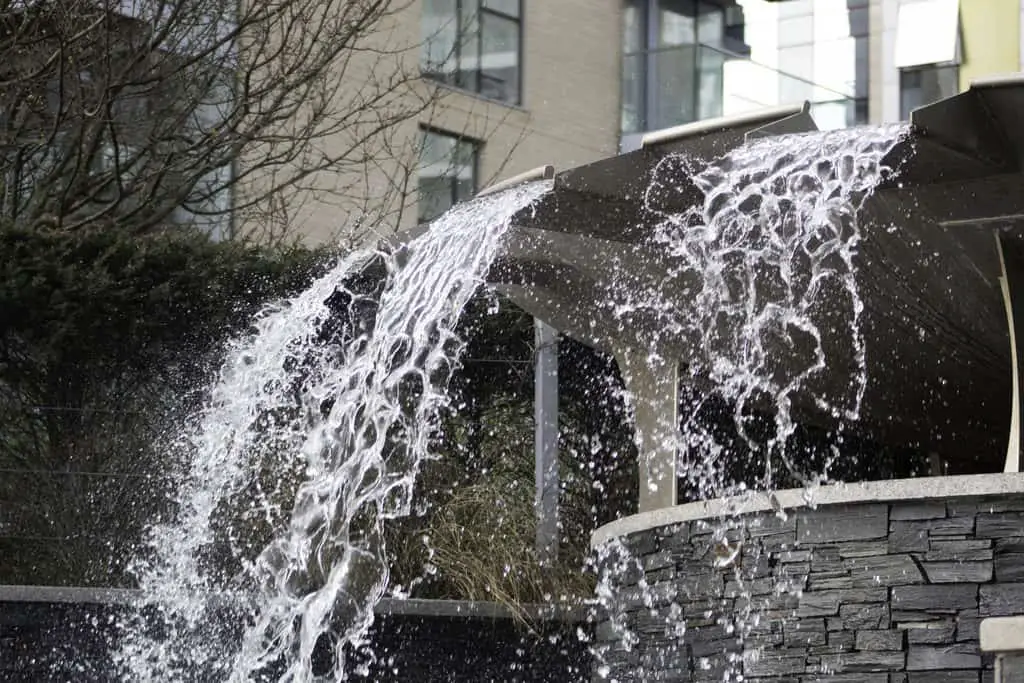
Here the water action is frozen and the very fast shutter captured a microsecond of time, revealing the turbulent water as a delicate lace-like structure. This would be unseen by the human eye observing it in real-time.
Let’s consider the subject of moving water with a slow shutter speed. This time when we’ve framed the scene and pressed the shutter release button, we capture a very different image from the previous example. This time the rapidly cascading water will appear very soft and indistinct, more like the impression of long shiny combed hair.
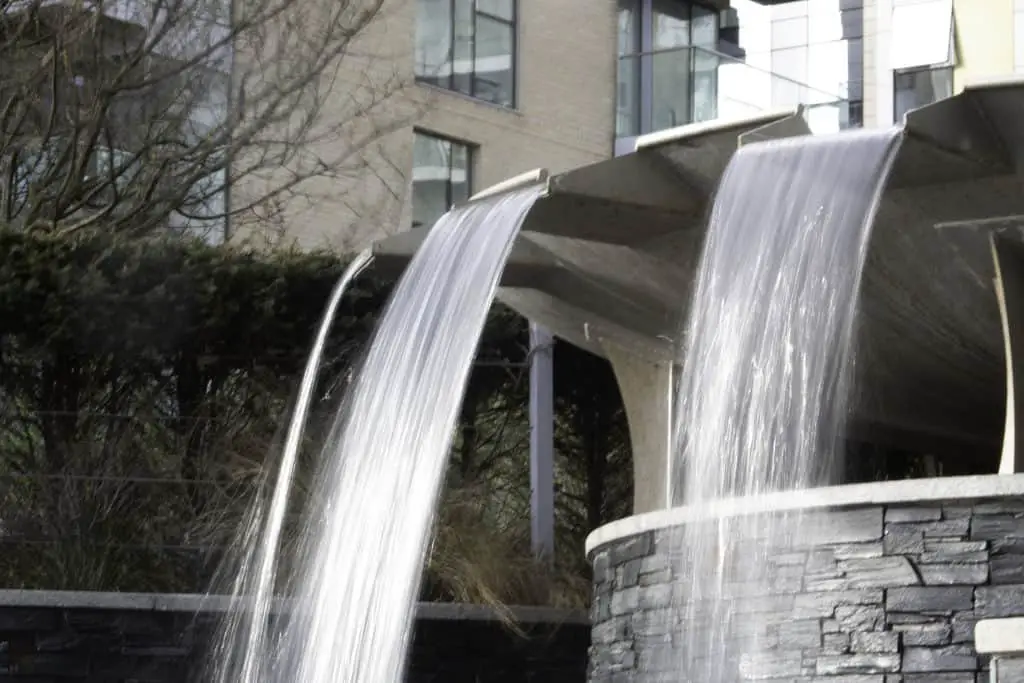
This is caused by the slow shutter allowing light from the scene of the rushing water to move in the scene before the shutter is closed. The degree of softness of the motion blur depends on the length of the slow shutter speed.
A shutter speed of 1/30 of a second would produce some blurring but a slower speed of several seconds would result in a very misty haze. In this case, a tripod would be required to prevent the rest of the scene from becoming accidentally blurred by the unavoidable movements (camera shake) of the photographer holding the camera.

Very Slow Shutter
2.5 seconds shutter speed exposure. You will definitely require a tripod for such a slow shutter speed. If the scene is too bright you may also need to use ND filters (Neutral Density) to make the scene dark enough for a long exposure. These ND filters darken the scene without affecting the colours.
Photo by Oscar J Harper
As we use slower shutter speeds it may be necessary to use smaller apertures to maintain the correct exposure. This has the added advantage of producing a deep depth of field that will render the foreground and background sharply in focus. This can produce the very pleasing result of a blurred movement subject on a sharply focussed backdrop.
In night time photography shutter speeds are naturally going to be slower because of the lower light levels. You can use this to your advantage and with the use of a tripod create very interesting photographic effects. Imagine a street scene at night with shopfronts lit up, people walking on the sidewalks and vehicles driving in both directions.
A camera mounted on a tripod with a very slow shutter would create a striking image with the vehicle lights streaming like laser beams along the street, the vehicles would disappear and people walking would appear like hazy, blurred ghosts.
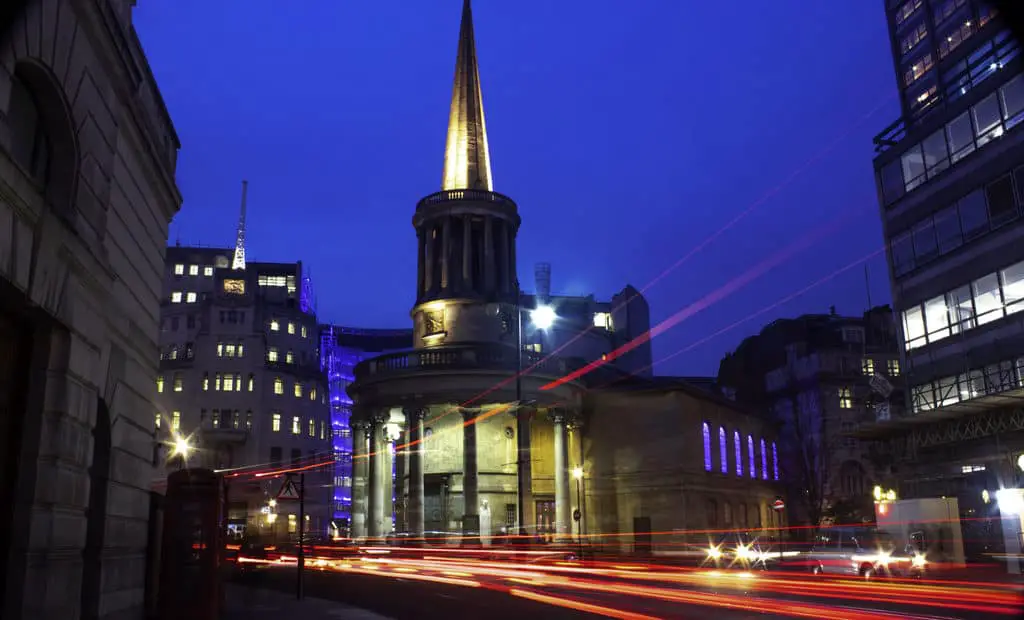
I set up my tripod outside the BBC building in Central London. It was dusk and the sky light was just about within the “blue hour”. I had to wait until the traffic was dense and continuously moving before releasing the shutter. The high level laser lights were produced by a double-decker bus passing through the scene. This added much needed high-level interest against the dark blue sky.
To achieve the really long laser beams you need a very long exposure so the shutter speed was 30 seconds. It works best if the vehicles enter and leave the scene during the exposure. I did use ND filters (Neutral Density) to achieve the very long exposure.
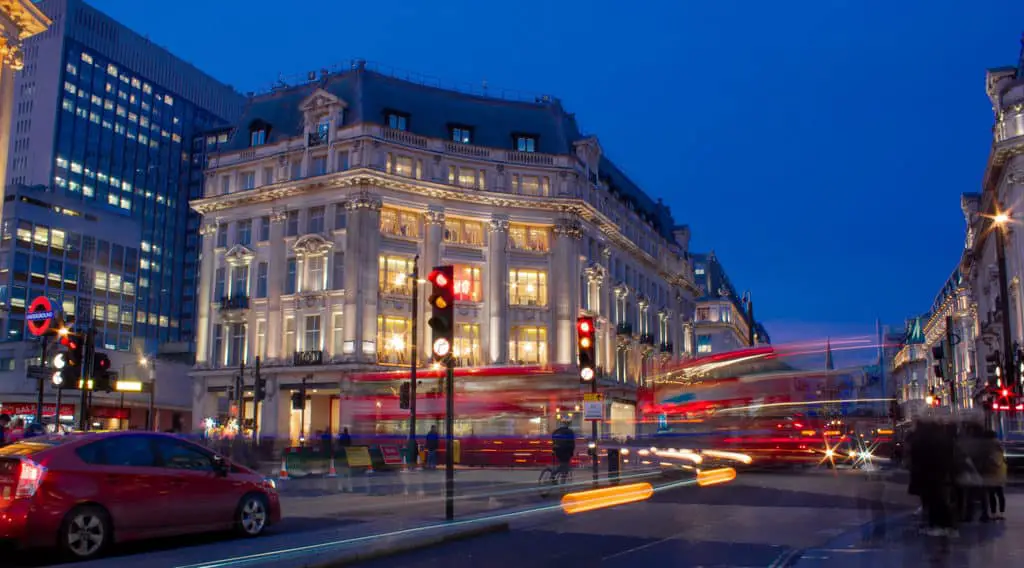
This was a slightly shorter exposure of 4 seconds shutter speed. The buses were moving slowly so they are not completely invisible. The effect is very interesting though, like an impressionist painting. Unexpectedly, the exposure captured the flashing lights of a vehicle indicator like pulsed beams as it approached the camera.
These are very extreme examples of what you can achieve with knowledge of the creative use of shutter speed. There are many shutter speeds between the extremely fast and the extremely slow and you can experiment with varying degrees of speed to achieve the exact creative result that you desire for your image.
Related Questions
What is Aperture in Photography and How to use it?
The aperture is basically a hole in the camera that lets in light to create an exposure and then an image. The diameter and therefore the amount of light allowed in is fully controllable automatically or manually. To find out more about this fundamental aspect of photography click here!
What is ISO in Photography and How to Use it?
ISO is one of the three fundamental elements of exposure in photography. If you would like to learn more about ISO click here!
How do You Take Grainy Photos?
Understanding shutter speed is a key factor in producing deliberately grainy photos. This seems to go against the general aspirations of photography but it can add some gritty quality to the right subject. To find out more about this unusual approach click here to read our article in Photography Skool.

